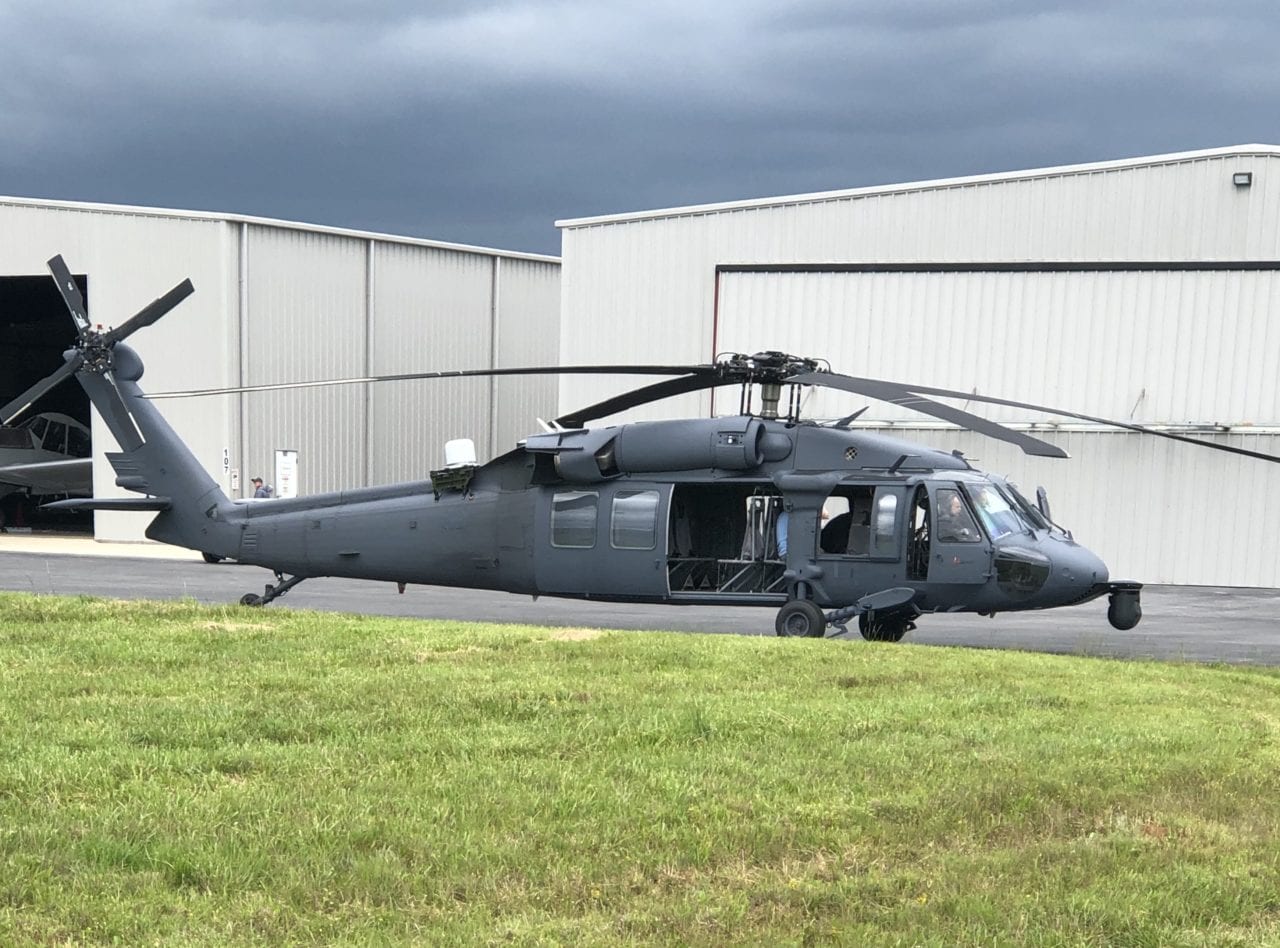
Hughes said that it conducted a flight test of its HeloSat system on a UH-60A Black Hawk pictured here on May 21. Photo: Hughes
Beyond line of sight satellite communications (SATCOM) for helicopters will become increasingly common over the next decade for a variety of missions, including military intelligence, surveillance and reconnaissance (ISR); search and rescue; disaster relief; firefighting and VIP transport for officials who want to conduct VTCs and use streaming video, according to a Hughes executive.
“The market opportunity is huge,” Wayne Marhefka, senior director of business development for the defense and intelligence systems division of Hughes, told Avionics International in a June 9 telephone interview. “The desire for data anywhere, anytime is great and is increasing in society as a whole. 10 years from now, it [SATCOM] will probably be on every helicopter.”
Marhefka’s comments come, as Hughes Network Solutions announced a successful flight demonstration on May 21 of its HeloSat SATCOM system on a UH-60A Black Hawk owned by XP Services, based in Tullahoma, Tenn. The flight demonstration included a Hughes HM series modem, the Ku-band frequency Intelsat Galaxy 18 (G-18) satellite, and a 22-pound fuselage-mounted GetSat Milli-H antenna. The Ku-band frequency allows higher data rate transmissions than L-band and is cheaper to use than the L-band satellite frequency, as the latter charges by per minute usage, according to Hughes.
Hughes said that HeloSat during the May 21 demonstration “transmitted consistent, real-time, full-motion video to a live global audience from the Black Hawk as it surveilled the Tennessee landscape on May 21.”

The May 21 UH-60A demonstration used the GetSat Milli-H antenna in a fuselage-mounted radome. The antenna is a 22 pound, portable on-the-move satellite terminal solution that allows transmit and receive of high bandwidth data rates of more than 10 Mbps, according to GetSat.
Moving rotors can significantly disrupt satellite communication signals–a signal degradation known as “rotor shadow”– and can lead to a substantial loss of data received by rotorcraft, but Marhefka said that the May 21 demonstration featured transmission of data at a rate of 1.5 megabits per second (Mbps) to 2 Mbps over the Intelsat G-18 satellite with “zero packet loss.” HeloSat is capable of transmitting 10 Mbps, depending on weather conditions and the satellite used, he said.
Another HeloSat flight test on the Black Hawk is scheduled for June 29 – a test that will add a high-definition L3Harris WESCAM electro-optical/infrared camera. Thus far, a majority of potential HeloSat customers have been militaries, as HeloSat “is not inexpensive” and will cost several hundred thousand dollars per unit because of the required antenna, modem, ground infrastructure, integration, and certification expenses, Marhefka said.
Spain is interested in HeloSat for its NH90 helicopters, while India may acquire them for its Mi-17 helicopters.
 | Want to hear more on aircraft connectivity applications? Check out the Global Connected Aircraft Podcast, where Avionics editor-in-chief Woodrow Bellamy III interviews airlines and industry influencers on how they’re applying connectivity solutions. |
Hughes began the HeloSat effort in 2013 with writing an algorithm to allow wideband data to pass through the rotor blades, but the unique waveform initially required a 100-pound antenna in testing in 2014 for possible incorporation on Northrop Grumman’s MQ-8 Fire Scott unmanned helicopter. Over the years, industry has progressed in increasing satcom technology readiness levels and reducing the size, weight and power of satcom antennas to make them compatible for helicopter use.
In addition to Hughes, Inmarsat and Cobham debuted the SwiftBroadband Helo (SB-Helo) X-Stream system last November to allow X-Stream high data rate services in rotorcraft. Last month, the Austria-based SCOTTY Group said that its onboard satcom system, which uses the Thuraya or Inmarsat satellite networks, is available for Airbus H135 and H145 helicopters.